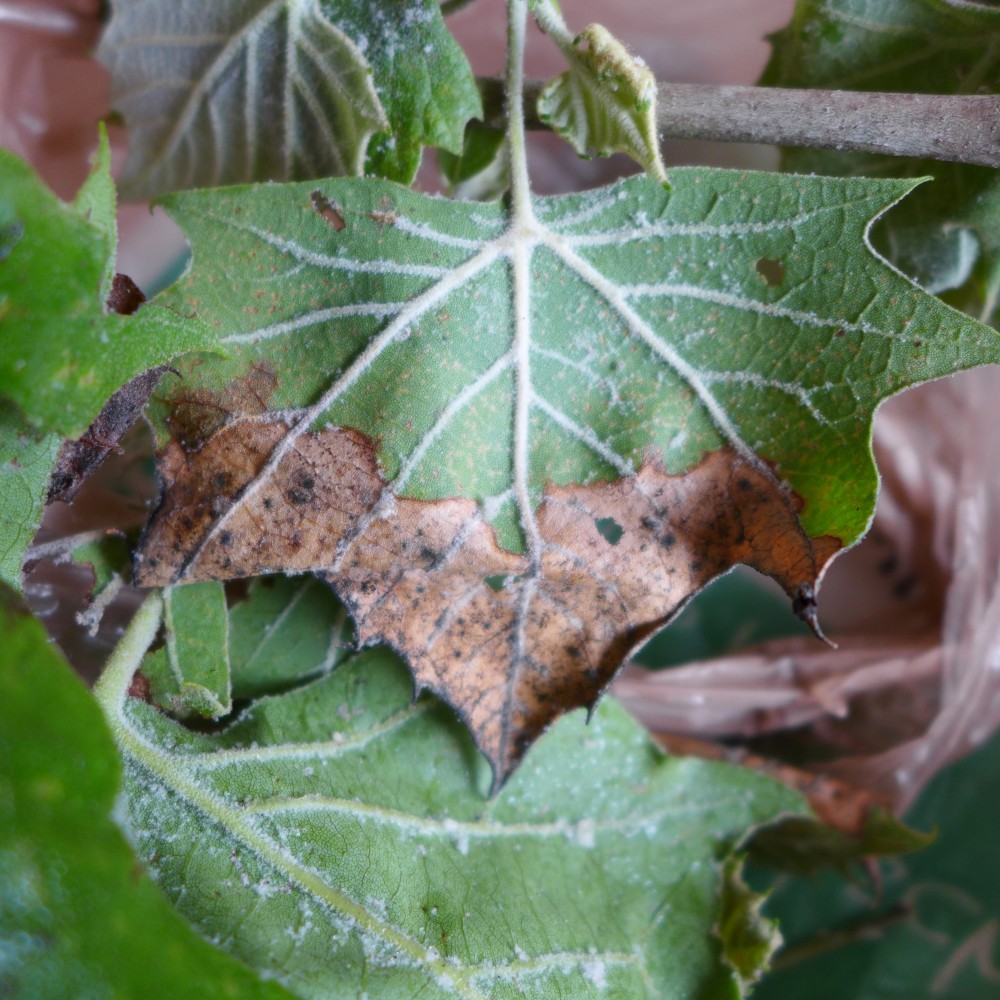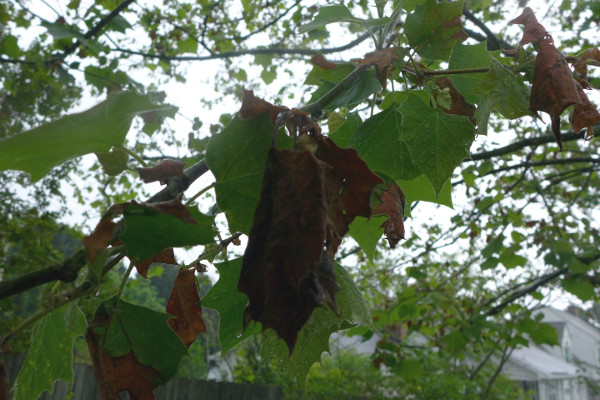Late in April a customer in Wake Forest (north of Raleigh) asked me to look at his tree. There was bark damage on the trunk and the leaves were growing in strangely.
The tree was a Sycamore (Platanus occidentalis). From the images he sent I noticed the leaves looked curled and despite the intense golden glow from the sunset (he really captured a great color), the color of the leaves was off. It had been cool and wet this spring, with the exception of a brief heat wave that started just days before he took the pictures. My best guess was anthracnose.

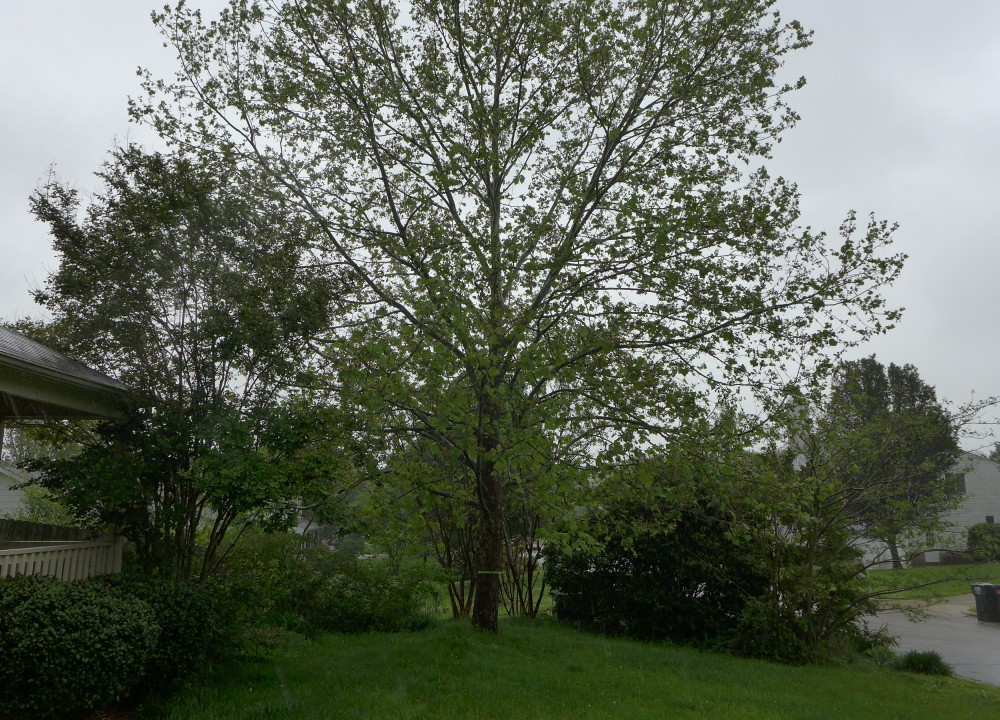
To confirm, I was expecting to see damaged leaves as shown by Iowa State and re-growth of newer leaves that would be unaffected as the temperatures had risen enough to supress anthracnose.
I visited his property on May 5th and found these symptoms: affected leaves had large blotches of dead tissue, there were a great many missing leaves (probably killed in the bud stage), and new green leaves were coming in. Although temperatures did reach 29F on two days in early April I don’t expect that temperature would affect a tree with a range that reaches Maine. The Sycamore had anthracnose.
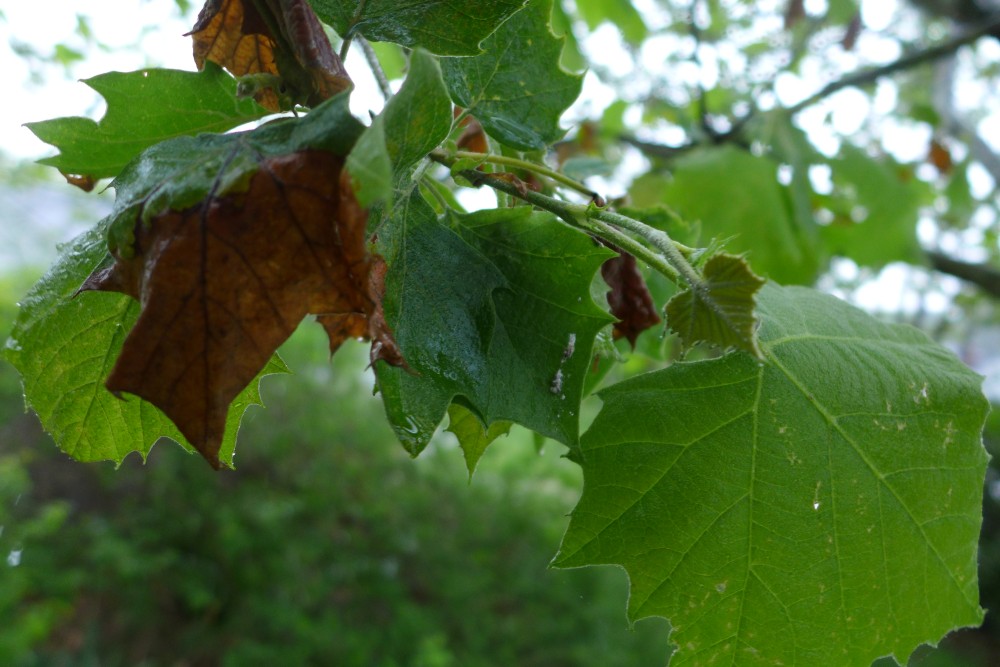
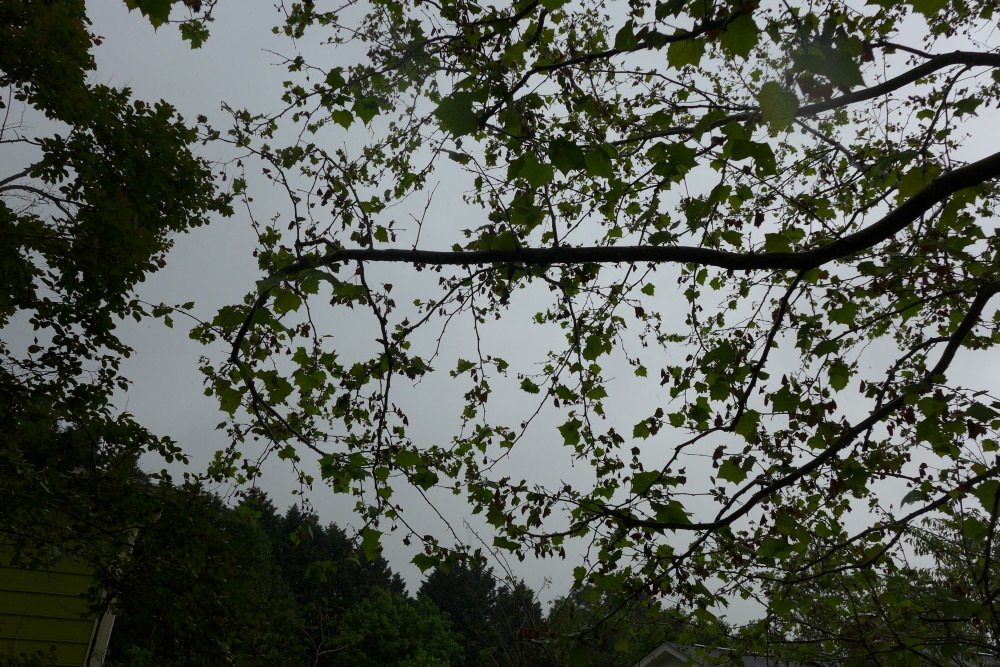

The trunk damage was a bark wound about 1/8 of the tree’s circumference along the base. I don’t know if it was caused by anthracnose or if anthracnose exacerbated damage caused by a mower or trimmer. Notice that the lawn grows right up to the trunk. Grass does compete with trees for nutrients and, furthermore, grass next to a trunk means power tools next to a trunk (and root flare).
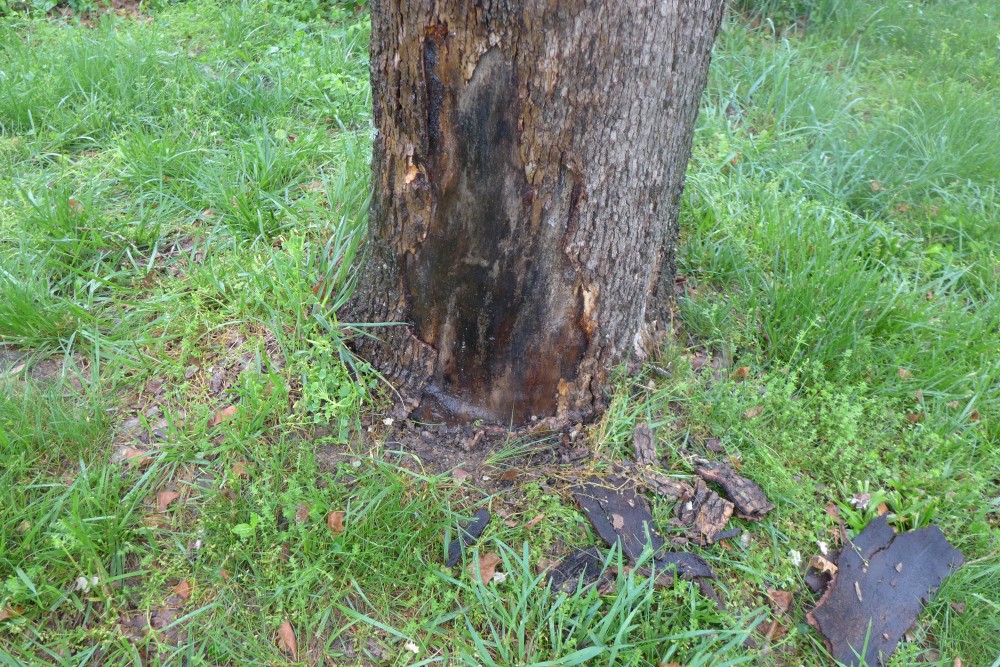
The customer asked what I recommended. My recommendations were:
The tree looks to be in fairly good condition. The trunk wound probably won’t close, but many trees live on with larger hollows and wounds.
What can you do?
1. Create a mulch ring around the tree out to the drip line of the tree. This would be 20 to 30 feet in diameter. At a minimum, I would create a mulch ring 10 feet in diameter to protect the tree trunk. Ideally, scrape away the grass and dirt for a 5 foot diameter around the trunk b/c it’s high. Visible root flare is good. Just don’t damage the roots or trunk when doing so. Beyond that, kill the grass. Cover with 2-3 inches of arborist wood chips or triple shredded bark. Don’t use pine bark, straw, or artificial mulch.2. You could get tree injections to treat the fungus. These will need to repeated every few years.
3. When leaves come down, rake them up and dispose of them.
4. If you did want the tree removed, my quote would be $179 to cut down and $200 to dispose ($379 total).
With no injections, you would see about the same leaf damage early spring of each year, but as long as you get plenty of re-growth each spring the tree should make it okay. When you start to get less or get dead branches, then the tree is declining.
The customer replied, asking about fertilizer spikes. I replied:
Fertilize spikes won’t treat the tree disease. There are very few situations where I would recommend directly fertilizing a tree. In those cases I would do a soil and foliage test first. Doing the mulch is by far the best treatment for the tree, the wider you are willing to go the better with the drip line as the limit. 2-3″ of mulch will keep the soil from drying out as quickly, will capture more water, will eliminate competition with the grass currently there, and will break down over time to provide nutrients the tree needs, some of which you will lose by raking up the leaves.
Fertilizer spikes are a carry-over from crop plants, which are the result of human intervention to get big fruits and vegetables which require more nutrients to produce. If you want to spend money on the tree beyond the mulch, the fungicide injections would be the best bet.
Additional photos:
